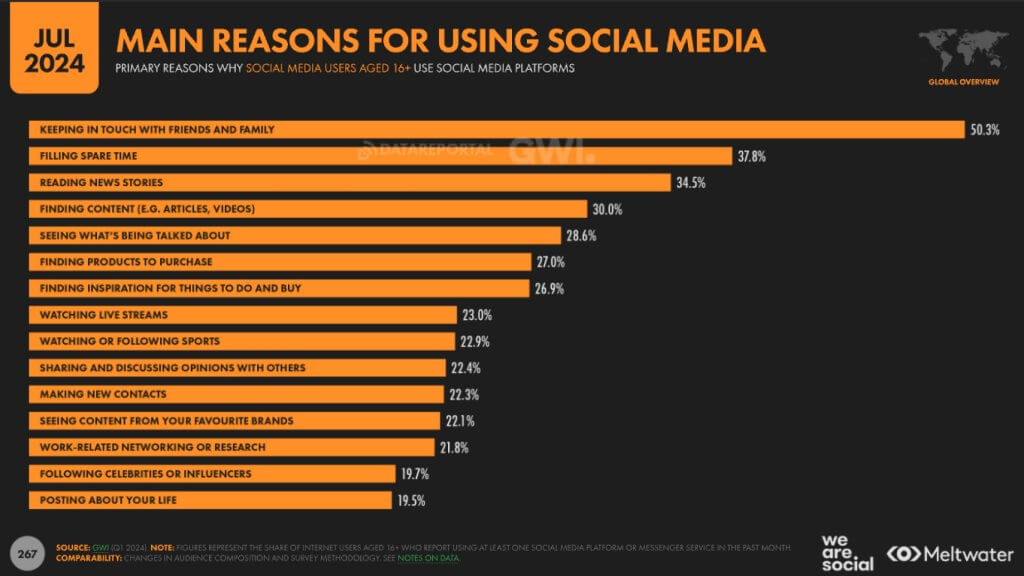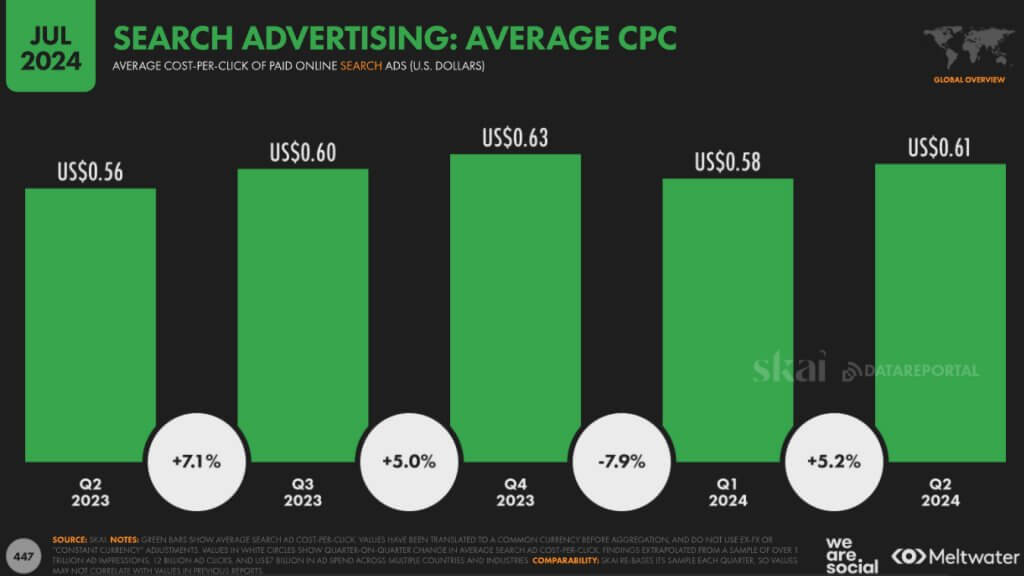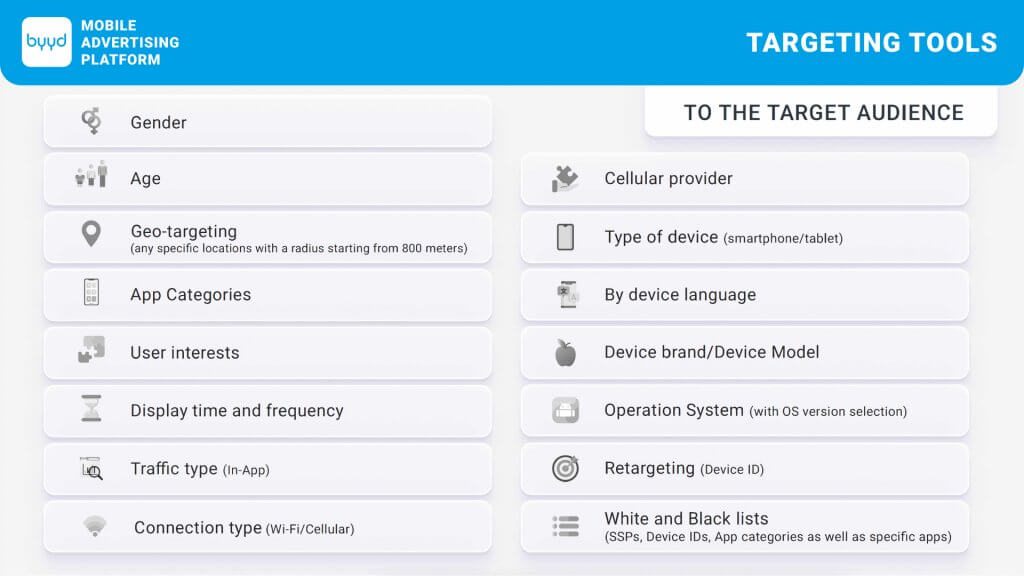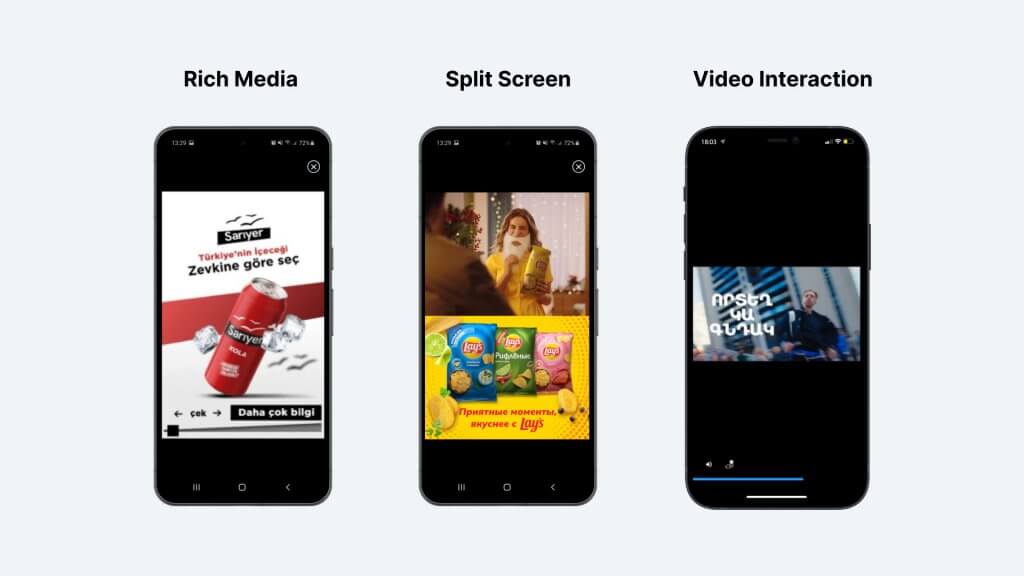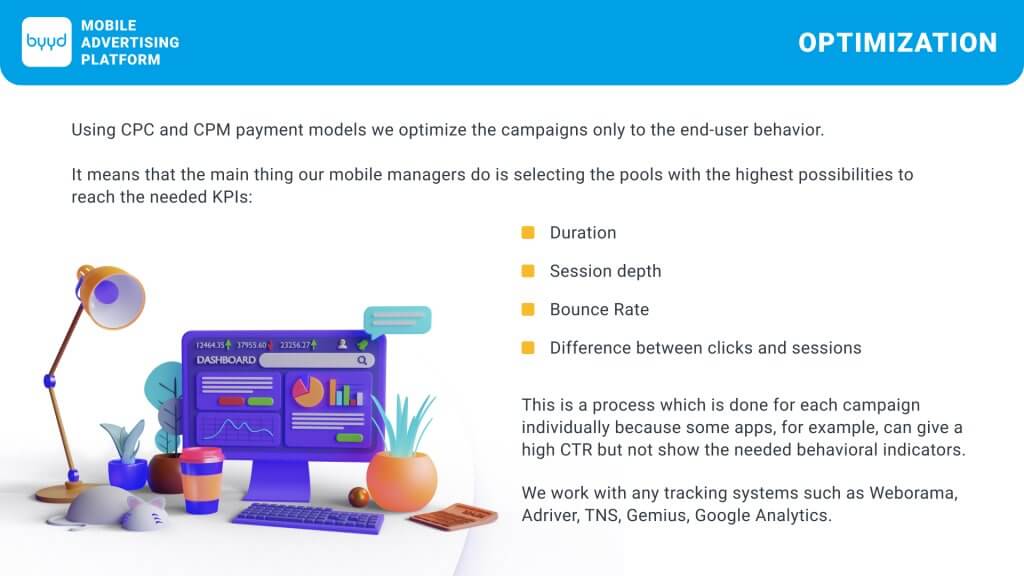Why mobile advertising should lead your brand image strategy
If you’re relying on social media and search engine advertising to attract an audience and boost brand awareness, your expectations may fall short.
While these channels can be helpful, they rarely ensure long-term success. Instead, it’s essential to integrate in-app advertising into your strategy.
Here’s why this is necessary.
The problem with social media as the primary user acquisition strategy
When people scroll through their social media feeds – whether searching for news or a quick dopamine hit – they’re unlikely to want to be distracted by an ad or a new website. They’re more interested in what their friends are up to or what trends their acquaintances are discussing.
This is backed by data from the Digital 2024 July Global Statshot Report, which outlines the main reasons people use social platforms:
- Passing the time – 37.8%
- Reading interesting stories – 34.5%
- Finding content – 30%
- Seeing what others are talking about – 28.6%
To grab their attention and encourage them to leave the platform, the content needs to be compelling and highly relevant so that they feel motivated to click.
Most users prefer to stay on the platform and keep scrolling through their feeds.
This doesn’t mean that social media advertising is ineffective – it certainly works. That’s why users see so many ads in their feeds. However, despite this, this channel shouldn’t be the cornerstone of your user acquisition strategy.
Relying heavily on social media doesn’t always yield consistent results because users don’t go there with the intent to discover new websites or products.
It’s a temporary tool that should support other channels, not replace them.
Search Engine Marketing for User Acquisition
Search Engine Marketing (SEM) is effective if users are already aware of your product and actively searching for more information.
It primarily works through long-tail keyword queries, which attract users specifically looking for a particular solution. However, it’s important to keep in mind that keyword competition can be fierce.
According to recent studies, in 2024, the cost per click (CPC) has increased by 5.2%, making SEM campaigns more expensive and less predictable.
Therefore, relying solely on SEM is impractical. Moreover, according to Datareportal, the effectiveness of SEM decreased by 2% in 2024.
In such a scenario, an omnichannel brand image strategy, where SEM is combined with other tools, provides a more sustainable and efficient user acquisition system.
Why mobile advertising should lead your brand image strategy
The best place to find engaged users is within mobile apps. In-app advertising reaches users who are actively interacting with content, which significantly increases the likelihood of conversion.
According to a survey by Goodfirms, 85.2% of respondents find in-app advertising useful, and 56.5% click on the offered links after viewing it, highlighting the effectiveness of this promotional format.
Moreover, unlike social media, where users interact with multiple platforms, mobile apps cover a much wider range of environments – from photo editors to games.
BYYD has been specializing in mobile programmatic advertising for 9 years, and during this time, we’ve gained extensive experience and a deep understanding of the industry.
If you need more reasons to prioritize mobile advertising in your brand image strategy, here are a few key points we can offer:
- Unique Targeting
We don’t just rely on basic demographic data but also use more specific parameters like device language, operating system, manufacturer, and provider.
Additionally, access to Big Data allows us to find even narrower segments.
- Variety of Formats
On the BYYD platform, a range of formats is available – from basic Fullscreen and Native banners to interactive formats like Rich Media, In-Game, and Video Interaction.
This variety allows for testing different creatives and improving campaign performance.
- Continuous Optimization
Our platform continuously optimizes ad campaigns, identifying the best placement sites with high metrics such as traffic and engagement depth.
Moreover, we place great emphasis on traffic verification. We offer verification through services like Weborama, Adriver, Gemius, MOAT, Sizmek, DCM, IAS, and DoubleVerify.
Traffic quality is verified in two ways:
- through pixels;
- via code.
In conclusion, while social media and search engine marketing are important for user acquisition, in-app advertising should be at the core of your brand image strategy.
If you have any further questions, feel free to reach out to our platform’s specialists. You can also explore our successful case studies to see the results of effective mobile brand promotion.
Was this helpful? Then share it with your friends and colleagues!
For consultations and partnership inquiries:
- Submit a request on our website.
- Email us at hello@byyd.me
